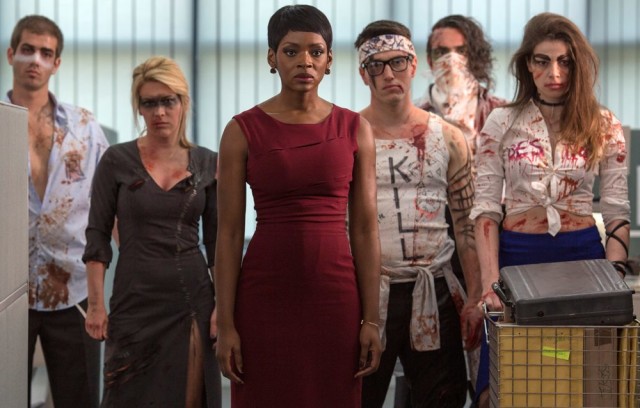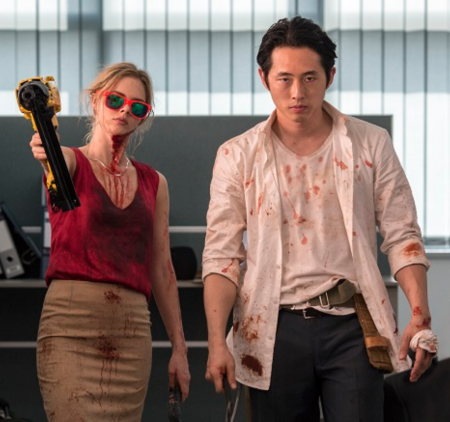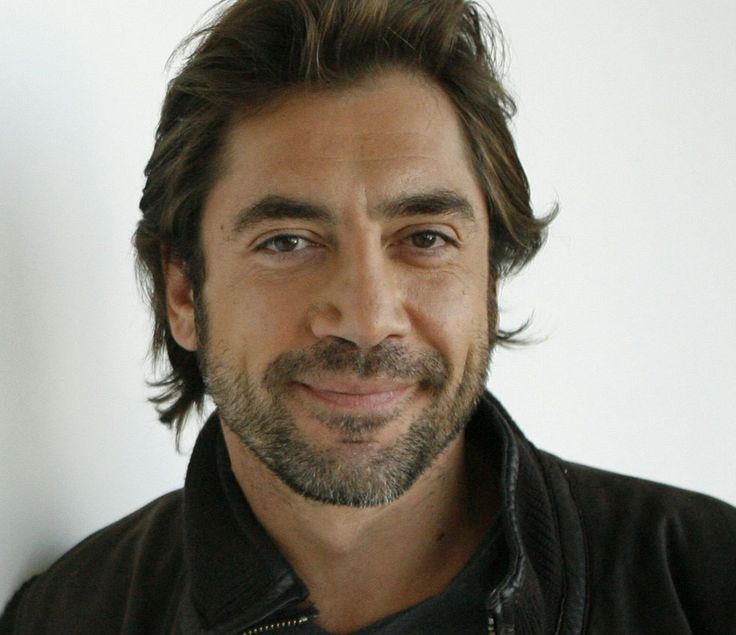Genre: TV Pilot – Sci-Fi/Drama
Premise: In the future, earth sends a small expedition to visit the origin planet of a strange musical signal, only for the mission to end in unparalleled disaster.
About: The Sparrow is one of those projects that’s been mired in development hell for almost 20 years now. And when you familiarize yourself with the subject matter, it ain’t hard to figure out why. This isn’t a simple story to tell. It’s an incredibly introspective (and weird) exploration of aliens and religion that’s unlike anything you’ve read before. They tried to turn it into a movie for a decade. And it was only in 2014, with this iteration, that they went the TV route, which is a way better medium for the complex character-driven tale. The draft was written by Michael R. Perry, who wrote one of my favorite scripts ever, The Voices. But it seems to have been jettisoned by AMC since. Sparrow was probably a few years too early. Nowadays, with everyone desperate for content, I find it difficult to believe that Sparrow can’t find a home. Maybe it’s time for Hollywood to get its bird call on.
Writer: Michael R. Perry (based on the novel by Mary Doria Russell)
Details: 57 pages (Revised Writer’s Draft – Sept. 30, 2014)
I’ll read any popular science-fiction novel. In fact, if you have any recommendations for sci-fi novels I haven’t read yet, by all means, suggest them to me in the comments. I read The Sparrow at least a decade ago, and found it to be one of the most challenging science-fiction novels I’ve ever read.
You have to understand that my blueprint for science fiction up to that point had been stuff like Independence Day and Men in Black. Big, loud, and obnoxious. Well, The Sparrow’s DNA is quiet, introspective, and creepy.
Despite that, I felt that the bones were there for a good adaptation. They would definitely need to deviate from the source material in places, though. Some of the plot points here are so non-commercial they may as well have been cooked up in Pyongyang. To turn this into a movie or TV show, an awesome writer would be needed. Knowing what Michael Perry was capable of, I felt this pilot had a chance. Let’s find out if he cracked it.
The year is 2089. We’re in the Vatican. A man in his 50s, Emilio Sandoz, is being kept there after some harrowing event, as we can see from his heavily bandanged body. Outside, a huge crowd is growing, throwing rocks at his window, calling him a rapist, calling him a murderer.
Cut to 20 years earlier. Sandoz is part of an exhibition to a faraway planet. The 7-man crew is being guided by Jesuits, the result of the unique signal that was sent to earth – a melody that many believe contained religious undertones.
The key members of the crew besides Sandoz are Father Roubidoux, the captain, Sofia Mendes, a linguist, and Sam Hawkins, a brilliant science professor and the only member of the crew who doesn’t believe in God. Sofia and Hawkins are married. And we find out early on that Sandoz isn’t a big fan of their relationship. That may be because he secretly loves Sofia.
Once on the alien planet, which is strangely devoid of obvious intelligent life, the team begins a weeks-long waiting period so the ship can measure the safety of the atmosphere. However, just a couple of days in, everyone wakes to find out that Hawkins has snuck out onto the planet.
Sandoz and Sofia go after him, and Sandoz eventually finds him looking out over a cliff. As Sandoz tries to persuade Hawkins to come back, Hawkins slips. Sandoz grabs him. But the question is, how hard did he really hold on? Because Hawkins slips from his grip and falls to his death.
Sandoz must break the news to Sofia and the rest of the crew. However, we get the sense that Sandoz is secretly happy. Sofia is finally his alone. Err, not so fast Sandozy. In a truly miraculous turn of events, Hawkins shows up at the ship the next day, perfectly fine! He also admits to something that would’ve been unthinkable just a day earlier – He saw God, and he now believes.
My big worry with an adaptation of The Sparrow was that much of the book was about thoughts and debate and religion and themes… all stuff that’s terrible for movies and television! There wasn’t much of an engine pushing the story along. And the characters were all rather restrained, or worse, droll.
Perry seems to have recognized this and smartly implemented a wonderful device to jump start a story.
Before we get into what that is, this is a good time to remind you that when it comes to visual storytelling, you want to make things ACTIONABLE! All that means is you want to introduce things that get your characters out there doing things, as opposed to staying in small rooms discussing things. Discussion has its place in storytelling. But it should never be the primary driving force of your narrative.
The quickest way to make a story actionable IS TO INTRODUCE A PROBLEM.
I was pretty bored throughout the opening of The Sparrow. But I can tell you the exact moment when my interest was jump-started. It’s when the crew woke up to find Hawkins gone. Now you had a problem. They needed to find Hawkins. That whole sequence was one of the best of the pilot. And it’s not because of any magical writing trick. It was simply that a problem was introduced, which meant our characters had to become ACTIVE to solve it.
Another great thing about making things actionable is that, usually, it leads to other interesting story developments. The thread where Hawkins comes back from the dead could’ve never occurred had Perry not created a problem in the first place. So if you ever feel like your story is slowing down, throw a problem into the mix. I guarantee you your characters are going to become more interesting, at least until that problem is resolved.
There will be challenges ahead if this pilot gets made. Mixing religion and aliens is a bit like mixing peanut butter and mayonnaise. I’m not sure the two sides believe in one another. It’d be like making a show about an NRA spokesman who preaches for more safe spaces. But that could also be the ace up The Sparrow’s sleeve, what makes it different from everything else out there. And we are in the Golden Age of television. You’re telling me you can’t greenlight The Sparrow when you’ve got stuff like The Orville on the air?
[ ] What the hell did I just read?
[ ] wasn’t for me
[xx] worth the read
[ ] impressive
[ ] genius
What I learned: Here’s a way to further take advantage of an ACTIONABLE sequence. Let’s say you need your characters to have a touchy-feely heart-to-heart, or a debate about religion. Do NOT write the scene in a room, with your characters sitting down statically. Instead, introduce the PROBLEM – in this case, Hawkins leaving – then SAVE that conversation for when your characters – in this case, Sandoz and Sofia – are on their way to solve the problem (in this case, finding Hawkins). The dialogue is going to play a lot better underneath the anticipation of solving something.
Genre: True Story – Thriller/Comedy
Premise: (from Black List) The unbelievable true story of a family man from Alaska in the midst of a midlife crisis who embarks on what he hoped would be a dream sailing vacation but ends up shipwrecked in the Atlantic Ocean with a charming but psychotic sea captain who has decided to stop taking his medication
About: Today’s script finished in the Top 15 of last year’s Black List! The spec script was picked up by LD Entertainment, who most recently handled Oscar contender, “Jackie.”
Writer: Ben Bolea
Details: 110 pages
I’m running the name through my head over and over again: “Bolea…Bolea…Bolea.” Where have I heard that name? It sounded familiar. Finally, I plugged it into the Scriptshadow Search Machine and, lo and behold, look what came back. Bolea co-wrote the runner-up script in my first ever Scriptshadow Contest!
That script, about a group of Alaskan high school seniors facing their impending life after high school, was a big favorite of mine. I LOVE when this happens – seeing screenwriters who keep at it. It goes to show that when you’re dedicated and work hard and write your ass off, eventually, good things will happen. And it’s great to see that Ben’s still writing about Alaska! Write what you know, people!
“Burt Squire” starts off with a simple creed from Bolea:
I met Burt Squire at Floater’s Bar in Big Lake, Alaska. He heard what I do for work and said he had a story I would like. He was right. A week later I received a package containing a journal.
This screenplay is taken from those pages.
Burt was on his way to the adventure of a lifetime in 1996 – a dream trip to Sydney, Australia – when he found out his girlfriend, Mel, was pregnant. That trip had to be axed, and after having one beautiful son, Wyatt, and later another, Trevor, Burt eased into the family life.
17 years later, on the eve of his 40th birthday, Burt’s wondering how it all went by so fast. Instead of traveling the world going on adventures, the native Alaskan travels to schools and side roads, plowing snow every morning.
So when Burt’s boss offers him a chance to go on a sailing adventure with an old friend, Burt doesn’t have to think twice. The old friend, Vernon J. Knux, is on the other side of the country, in Rhode Island, and needs someone to help him sail his boat to the Caribbean. No experience needed! Which is important, since Burt doesn’t know Jack about sailing.
Knux acts exactly how his name sounds. He’s a weirdo to the nth degree, babbling on in every-sentence-contradicts-the-last homeless-person speak. But Burt chalks it up to the eccentric nature of a real live sea captain. And soon they’re sailing into the Atlantic, destination, Bermuda, where Knux is delivering the boat to his son.
Almost immediately, Burt realizes something ain’t kosher. Knux encourages pissing your pants over using the lavatory, has a penchant for Viking pornography, performs naked Yoga on the regular, only eats cream of mushroom soup, and sings Taylor Swift songs on his ukulele.
Burt can deal with Knux’s eccentricities. But he can’t deal with him disappearing into the cabin for days at a time while he, someone who’s never been on a boat in his life, is left in charge of sailing it. This plays out in predictable fashion, with Burt navigating the ship into a giant storm, which rips their sails, rendering them immobile.
As Burt turns to Knux for help, Knux spins into insanity, breaking the GPS so they can’t be located, before it’s revealed that this isn’t even Knux’s boat. He stole it from some rich guy. At a certain point, Burt realizes that surviving this inconceivable dilemma is all on him. To live, Burt will have to become the captain now.
A couple of things I want to mention off the bat.
Bolea does a good job setting up his main character, Burt. If possible, you want to introduce your protagonist in his everyday world. This not only allows us to get to know him in his natural environment, but it helps to create contrast with the extremes we’ll see him in later.
For example, if we hadn’t met Luke Skywalker fighting a life of boredom on Tatooine before blasting off on his adventure across the galaxy, we wouldn’t have appreciated the character as much. We needed to see him roll his eyes while drinking blue milk and change power converters to truly understand how crazy it was to be shooting at tie-fighters from the Millennium Falcon.
I’m a big believer in using CONTRAST whenever possible. If you’re going to show your character on a boat in the middle of the ocean during a beautiful summer, it’s a great idea to start as far away from that as possible. And what’s further away than plowing snow in Alaska?
I also noticed that “Burt Squire” was about escape. Which was the same theme Bolea explored in his Alaska high school script. Kids wanting to get out of this place and go do exciting things with their lives. I bring this up because wanting to break out of a mundane life is one of the most universal themes there is. People relate to that. And if they’re relating to that, they’re relating to your hero. Which means they feel like they’re a part of your story. That’s a powerful tool when you know how to harness it.
Where “Burt Squire” hits choppy waters is in its tone. The situation Burt’s been placed in is harrowing. He’s a non-sailor stuck in the middle of the ocean with a guy who’s so crazy he’s sabotaging their rescue.
However, Knux is so funny, so out there, you can’t stop laughing at him. That humorous component gave me a sense of security that everything would be okay. That was my dilemma. I never feared for Burt. And I think you have to fear for your main character in a script like this.
The good news is, actors are going to be jumping over each other to play this character. Knux is such a weirdo. I could see Jim Carrey playing the part. He’s crossed over into Crazyville anyway. This role wouldn’t be much of a stretch.
The project also benefits from the fact that there’s nothing else like it out there. As much as we talk about Hollywood remaking the same stuff over and over again, the truth is actors and directors ALWAYS want to do something different. So if you can get them to believe in your project, they have the power to push it through a resistant system.
“Burt Squire” was fun! I think it needs to decide if it wants to be more comedy or drama. But either way, it was an enjoyable read.
[ ] What the hell did I just read?
[ ] wasn’t for me
[x] worth the read
[ ] impressive
[ ] genius
What I learned: There’s something about putting characters on a boat in the middle of the ocean that I like. There’s nowhere to go. And if you can introduce some compelling conflict into that mix, you’ve got yourself a movie, because the characters have no choice but to hash things out. Remember, guys, movies are conflict. Find the most intense conflict-laden situation you can think of and the story will write itself.
I originally planned on reviewing Mayhem today. But then I watched it. And the movie is a borderline disaster. It’s one of the most overwritten over-directed movies I’ve ever seen in my life. I then rented the movie Columbus. That movie is like a delicate slice of cinematic sweetbread. It’s also one of the most underwritten under-directed movies I’ve seen in my life. So I thought it’d be fun to review these two contrasting pieces of entertainment together.
And here’s the funny part.
I’d tell each and every one of you to write the abysmal Mayhem over the brilliant Columbus.
For those who don’t know, Mayhem is about a company attacked by a virus that makes its victims succumb to their worst impulses. If you’re an angry person, it makes you extremely violent. If you’re slightly manipulative, you become a sociopath. If you’ve got sex on the brain, it turns you into a walking sex machine.
When their building is placed on an 8 hour quarantine, a recently fired employee, Derek, enacts revenge on everyone who screwed him over, teaming up with a former female client the company also screwed over, to do so.
I expected to LOVE this movie. I thought the premise was fun. It was a way to make a zombie film without making a zombie film. It had that “familiar but different” thing Hollywood’s so keen on.
But the execution was too over-the-top, as subtle as your loud inappropriate drunk uncle. On the screenplay side, half the script is dedicated to explaining the virus. Even though the opening montage is specifically built to explain every nuance of the virus, we’re still being given virus rules 40 minutes later.
Here’s something to keep in mind for new screenwriters. Exposition (the process of explaining things so that your story makes sense) is fought on two fronts. The front everyone focuses on is the “How to Limit My Exposition” front. You’re trying to minimize how much you explain everything. Which is good. You should be doing this.
But the other front, the one nobody talks about, is to simplify your plot and rules in the first place! If you build your story on top of a simple premise and simple rules, you won’t need to explain as much! By making this virus, this company, the people within this company, and the laws governing this virus, so complicated, they had no choice but to use up half the movie on exposition.
On the other end of the spectrum was Columbus.
Columbus takes place in the titular town of Columbus, Indiana, a hidden goldmine for some of the most beautiful architecture in the country. When a visiting professor of architecture falls gravely ill, his son, Jin, must fly in and wait for the doctors to figure out what to do with him. In the meantime, he meets a townie, Casey, with the potential to do something great in the world, but who’s sacrificed that opportunity to take care of her addict mother.
Talk about completely opposing plots, right? Whereas every second of Mayhem is dedicated to explaining something or killing someone, you might go 3-4 minutes at a time in Columbus without a character saying a word.
The movie is one of the most beautifully shot I’ve ever seen, so much so I tracked down interviews with the elusive director, a 50-something Korean man named Kogonada (who up until this point had only done video essays and never been on an actual movie set). Listening to him discuss his film was fascinating. His entire approach to filmmaking is to prioritize form over plot. To him, the perfect shot (of a building, a character, a lone room in a house) was far more important than two characters conversing. It’s pretty much the antithesis of what I preach. And yet it worked brilliantly for the film.
What Is Neorealism? from kogonada on Vimeo.
Granted, Kogonada has a filmmaking eye like no other. Every frame of his is a painting. Therefore, had a less talented director tried to do the same thing, I’m sure I’d have been chastising him for not focusing more on story.
With that said, Kogonada still finds a story that resonates. Remember, you can get away with simple plots as long as the themes are universal, as long as the issues are relatable. Both Jin – working a soulless corporate job that’s desensitized him to the world – and Casey – being stuck in a small town instead of going out and following her dreams – are universal conflicts that many people can identify with.
And unlike Mayhem, where the plot had to be jammed in our faces every five seconds, Kogonada used the most minimal plot device possible – a sick father who was keeping our main character stuck in town. It was a big reason why the story worked so well. The plot point that placed our characters together was borderline invisible.
With all that said, if you’re choosing between writing a Mayhem or a Columbus? I’ll tell you to write Mayhem every time. It’s got a fun hook. It’s marketable. You can imagine the movie when someone pitches it to you. It’s going to get priority over a “Columbus” like idea in every production room in town.
Not to mention, the prestige Straight-To-Digital release is an emerging avenue for spec screenwriters. I say “prestige” so it’s separated from the abysmal D-Movie efforts that Nic Cage and John Cusack star in. These prestige digital offerings are cooler, hipper, the kind of stuff that’s going to get play on movie web sites. But that means your idea needs to be cool and hip. It cannot, sadly, be Columbus.
With that said, Columbus is the perfect vehicle for a writer-director. If you have something that isn’t sexy on the page but you KNOW is going to look great on film, directing the movie yourself is the way to go. Realistically, nobody’s going to be interested in your small personal movie but you. And that’s okay. Cause plenty of these personal writing-directing efforts turn out to be great.
But if you have no interest in directing? Come on. Be smart. Write something with a hook like Mayhem.
That’s right. No Amateur Offerings this weekend.
I’m playing with this idea of doing it every other weekend, making it more of an event. But that could change at any moment. Also, for those interested in contributing to Monday’s review, I’m watching “Mayhem.” The well-reviewed film is out in theaters and on Digital. So you can rent it right now. I think Mayhem represents a new tasty avenue for spec screenwriters.
Meanwhile, they’re making a NEW Star Wars Trilogy with Rian Johnson. As in, NO SKYWALKERS.
Disney must loooooooove The Last Jedi. Either that or this is the reward for being the only Star Wars director that Kathleen Kennedy actually liked. I have to admit, I’m skeptical. The biggest achievement of Star Wars was its world-building. It created an entire galaxy of planets and ships and aliens and cool characters. To try and do that all over again from scratch is a huge undertaking.
When I watch The Last Jedi trailer, I don’t see any world-building at all. It’s all stuff we’ve seen before. I’m hoping Disney got brave and they’re hiding all the new stuff for the film. That’s the only thing that makes sense to me. Whatever the case, this upped my interest in The Last Jedi ten-fold. An entire new trilogy is resting on it. Talk about stakes. Rian Johnson said it best on his Twitter. “Obviously I hope you like The Last Jedi. But man now I REALLY hope you like The Last Jedi.”
Genre: Thriller/Drama
Premise: A Vietnam POW struggles to survive captivity to seek revenge on the group of soldiers who betrayed him and left him for dead.
Why You Should Read: Been at this incredibly rewarding and gut-punching craft for seven years now. I’ve had my share of contest placements and even turned one of my ten scripts into a multi award-winning book, however, I’m still on the hunt for that big breakthrough. For this script I stepped way out of my comfort zone and broke some of the so-called “rules.” This is a past/present script that is part The Revenant, part Apocalypse Now, and part Saw. Would love the invaluable feedback from the Scriptshadow community to make it the best it can be.
Writer: John Avrai
Details: 95 pages
We had a tie in last weekend’s Amateur Offerings.
And that meant the onus was on ME to pick a winner. This is a good time to take you into the mind of a script-reading madman, because I think the way I approach which script to read is similar to how most people in the industry would choose between two scripts, all else being equal.
The primary determining factor is, which concept do I like better? In this case, I felt both concepts sounded interesting. And that led me to determining factor number 2. You guys are going to hate me for this but I promise you it’s something most producers and agents use in their decision-making process as well. That’s right. Page count. One script was 105 pages. The other was 96. The latter would save me 7-10 minutes of time in my evening. Game, set, match. My Sojourn in Hell.
That’s not to say Dark Horde will never get the call. It could come up in a Rematch Week somewhere down the line. But right now. It’s all about the sojourn, baby. Even if I don’t yet know what sojourn means.
Might need to change that title.
Okay.
Plot summary.
69 year-old Eiten Comacho has just flown into town for a Veterans Benefit. Camacho, a badass soldier in the Vietnam War, isn’t off the plane more than five minutes when he’s approached by a woman who claims to be associated with the proceedings. She guides him towards a parking lot where he’s quickly drugged and thrown in the back of a van.
When he wakes up, he’s with three members of his old infantry unit back in Vietnam. There’s Whybrow, a chickenshit wannabe weatherman, Ox, a former tough guy who’s since found the lord, and Emmit, Ox’s dumbass little brother. All the men have been cuffed and restrained.
They’re soon met with the sight of the woman who drugged and kidnapped them.
Before we can work out what’s happening, we flash back to Nam, where we meet Fort, the weakest member of their outfit – a man so incompetent (he can’t even do one pushup) that the others are routinely forced to pick up his slack. It gets so bad that Comacho beats the hell out of Fort in the hopes that he gets stuck in medical and they never have to see him again.
From there, we cut back and forth between the past and the present, learning more about how the guys bully Fort, and more about this mysterious woman who’s torturing them. Eventually we find out that Camacho killed a local Vietcong woman, and to make sure the word never gets out, he attempts to kill Fort as well. But Fort survives and is later captured by the Vietcong.
Back in the present, the mysterious woman drops a bombshell on all of them. Their shitty lives since Nam (they’ve all been victims of a string of bad luck) have been meticulously orchestrated by her. She made sure Camacho went to prison for 30 years. She made Ox’s business fail. She sabotaged Whybrow’s weatherman job. She’s the sole source of their miserable lives.
Who is this woman? Why is she such a monster? Will she kneel for the anthem on Sunday? And what ever did happen to poor Fort, who barely escaped Camacho’s murder attempt that day? Inquiring minds should check the comments section for answers.
On Wednesday, I complained about a script that was too predictable.
So before I do anything, I have to give props to John for writing a script that, for 60 pages, I had NO IDEA where it was going. When he says he broke rules, he wasn’t lying. This was a wild one.
For starters, there’s no protagonist! Going the no-protagonist route is extremely risky because audiences want somebody to latch on to. They want to feel connected to someone. We didn’t feel connected to anybody here. I mean, Camacho was introduced first so I thought he was our hero. Yet he’s the most despicable character of the bunch. After I found that out, I was left stranded. Who am I rooting for now? Crazy Torture Lady? Kind of hard to get on board with mysterious torturers. Was Fort our hero? No. For the first 60 pages, we only see him through the eyes of others. Talk about keeping me on my toes!
Despite its unpredictable nature, the script still had an ENGINE. What I mean by an ENGINE is that there was still something DRIVING our interest, our need to keep turning the pages. It’s important I make this distinction because it’s easy to write something unpredictable if you just ramble on aimlessly. But we’re going to lose interest if it’s clear the story isn’t going anywhere. Here, the script still had this mystery of: Who is this woman and why is she doing this? So despite us jumping all over the place and going back to Nam for these crazy flashbacks, I was still driven by the desire to find out what this woman’s end game was.
Another thing I picked on the other day was the writer not doing anything unexpected with the plot. You have to take chances with your plot beats or else the story becomes boring. Here, midway through the script, the crazy woman simply unlocks everybody and gives them access to a machine gun! Our characters could’ve hopped up and killed this psycho right then. It was moments like this where I said, “Wow, I did not expect that!”
So what’s the deal then? Did I like this script?
Here’s the problem with My Sojourn In Hell despite its mysterious setup and consistent risk-taking: It was seeped in anger. Reading the script made me feel sad, depressed, angry. Watching the worst in human beings exploit the worst in other human beings – That’s not my cup of tea. And I get that this isn’t an issue for some readers, which I respect. But, for me, a script has to have a sense of hope SOMEWHERE. I can’t leave feeling like humanity is hopeless. It’s just too depressing.
Even in the torture-porn era, you had the torturer, and you had the person getting tortured. And the person getting tortured was usually good. So you were hoping they were going to somehow get out of this and maybe kill the villain. Remind us that good conquers all. My Sojourn In Hell gave us bad people going after bad people. And so even if I was intrigued by what was going to happen next, I never had someone to root for.
In addition, the final act falls apart. The stuff about one brother secretly fathering the other brother’s son felt kooky. And to add this entirely new character of Lee (who accompanies Fort in a POW camp) with 30 pages to go… it felt like the narrative was unraveling rather than coming together. In a way, Fort becomes our hero. But like I said above, we barely knew the guy. We only saw him through the eyes of others, and usually simplistically. He wouldn’t do a push-up right and people would kick his ass. That’s not how you get an audience to root for a character. We have to get to know him on some level.
Also, I figured out what the twist was with a good 40 pages to go, only because there was literally NO other way it could’ve gone.
With that said, John is a good writer. I’d encourage him to enter Amateur Offerings again with something that’s less of a downer. But that’s just my opinion. What did you guys think?
Script link: My Sojourn In Hell
[ ] What the hell did I just read?
[x] wasn’t for me
[ ] worth the read
[ ] impressive
[ ] genius
What I learned: If you’re a writer who wants to take some big chances with your narrative, really be unpredictable, this is a good way to do it. Have a giant unanswered question/mystery at the center of your story, and the reader will let you bounce around and do a lot more avant-guarde stuff than usual.








